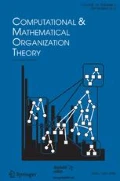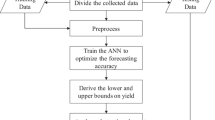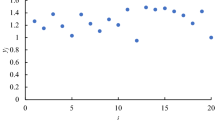Abstract
Productivity is critical to the long-term competitiveness of factories. Therefore, the future productivity of factories must be estimated and enhanced. However, this is a challenging task because productivity can be improved based on a learning process that is highly uncertain. To address this problem, most existing methods fit fuzzy productivity learning processes and convert them into mathematical programming problems. However, such methods have several drawbacks, including the absence of feasible solutions, difficulty in determining a global optimum, and homogeneity in the solutions. In this study, to overcome these drawbacks, a specially designed artificial neural network (ANN) was constructed for fitting an uncertain productivity learning process. The proposed methodology was applied to an actual case of a dynamic random access memory factory. Experimental results showed that the ANN approach has a considerably higher forecasting accuracy compared with several existing methods.









Similar content being viewed by others
References
Bailey T (1993) Discretionary effort and the organization of work: employee participation and work reform since Hawthorne. Working Paper, Columbia University, New York
Brandt L, Van Biesebroeck J, Zhang Y (2009) Creative accounting or creative destruction? Firm-level productivity growth in Chinese manufacturing. Working Paper 15152, NBER Working Paper Series
Chen T (2013) A flexible way of modelling the long-term cost competitiveness of a semiconductor product. Robotics & Computer Integrated Manufacturing 29(3):31–40
Chen T (2016) New fuzzy method for improving the precision of productivity predictions for a factory. Neural Comput Appl (in press)
Chen T, Lin Y-C (2008) A fuzzy-neural system incorporating unequally important expert opinions for semiconductor yield forecasting. Int J Uncertain Fuzziness Knowl-Based Syst 16(1):35–58
Chen T, Romanowski R (2014) Forecasting the productivity of a virtual enterprise by agent-based fuzzy collaborative intelligence—with Facebook as an example. Appl Soft Comput 24:511–521
Chen T, Wang Y-C (2013a) Evaluating sustainable advantages in productivity with a systematic procedure. Int J Adv Manuf Technol (in press)
Chen T, Wang Y-C (2013b) Semiconductor yield forecasting using quadratic-programming based fuzzy collaborative intelligence approach. Math Probl Eng. Article ID 627404
Chen T, Wang Y-C (2016) Estimating simulation workload in cloud manufacturing using a classifying artificial neural network ensemble approach. Robot Comput Integr Manuf 38:42–51
Donoso S, Marin N, Vila MA (2006) Quadratic programming models for fuzzy regression. In: Proceedings of international conference on mathematical and statistical modeling in honor of Enrique Castillo
Doraszelski U, Jaumandreu J (2013) R&D and productivity: estimating endogenous productivity. Rev Econ Stud 80(4):1338–1383
Liu FHF, Wang PH (2008) DEA Malmquist productivity measure: Taiwanese semiconductor companies. Intern J Prod Econ 112(1):367–379
Malmquist S (1953) Index numbers and indifference surfaces. Trabajos de Estadistica 4:209–242
Pedrycz W (2008) Collaborative architectures of fuzzy modeling. Lect Notes Comput Sci 5050:117–139
Peters G (1994) Fuzzy linear regression with fuzzy intervals. Fuzzy Sets Syst 63:45–55
Stevenson WJ (2002) Operations management. McGraw-Hill, New York
Tanaka H, Watada J (1988) Possibilistic linear systems and their application to the linear regression model. Fuzzy Sets Syst 272:75–289
Wang Y-C, Chen T (2013) A fuzzy collaborative forecasting approach for forecasting the productivity of a factory. Adv Mech Eng. Article No. 234571
Author information
Authors and Affiliations
Corresponding author
Rights and permissions
About this article
Cite this article
Chen, T. Fitting an uncertain productivity learning process using an artificial neural network approach. Comput Math Organ Theory 24, 422–439 (2018). https://doi.org/10.1007/s10588-017-9262-4
Published:
Issue Date:
DOI: https://doi.org/10.1007/s10588-017-9262-4




